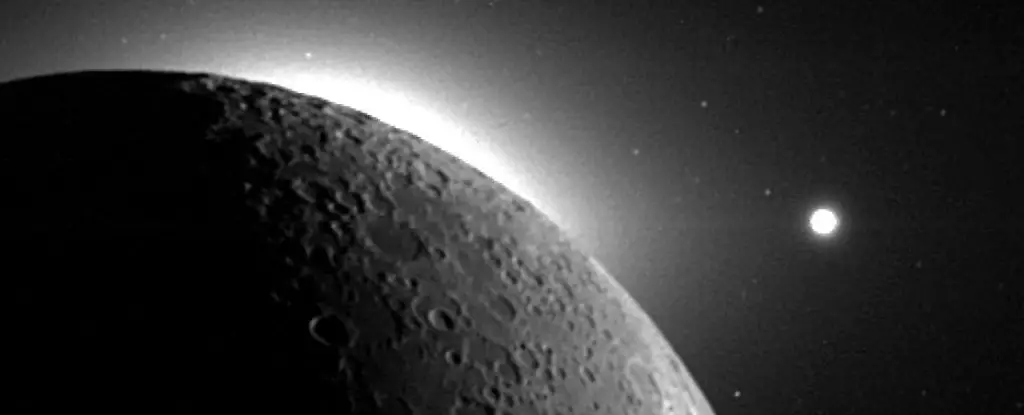The relationship between Earth and its Moon has captivated astronomers and scientists for centuries. Unlike other planets in our Solar System, which either have a multitude of moons or are completely devoid of them, Earth hosts a single, relatively large satellite. This distinctive mass ratio between Earth and the Moon raises profound questions about the Moon’s origin, prompting ongoing inquiries into planetary evolution and the dynamics that govern the formation of celestial systems. While the prevailing hypothesis has remained the Giant Impact Theory, fresh research is challenging this perspective and suggesting alternate avenues for understanding this enigmatic relationship.
The Giant Impact Hypothesis has long been the benchmark of lunar origin theories. According to this view, a massive celestial body collided with the young Earth, resulting in debris that ultimately coalesced to form the Moon. Support for this theory stems from the striking similarities observed in the mineral compositions of both Earth and the Moon, which imply a shared history. Such a scenario asserts that both bodies were born from the same material found in the early Solar System, reinforcing a familial bond between our planet and its satellite.
However, lunar formation theories are not limited to this dominant narrative. Additional hypotheses, such as the formation within an expansive vaporized cloud or synestia, propose that Earth and the Moon could have originated concurrently from the same primordial dust orbiting the Sun. While these theories add complexity to our understanding, they do not completely address all observable characteristics of the Earth-Moon system, particularly aspects concerning the Moon’s current orbit.
Recent research spearheaded by astronomers Darren Williams and Michael Zugger from Pennsylvania State University introduces an intriguing alternative: the possibility that the Moon was captured by Earth’s gravity after forming elsewhere. This notion of lunar adoption opens up a wider array of possibilities regarding how the Moon could have come to occupy its current position in orbit.
The physics behind gravitational capture suggests that celestial bodies can sometimes latch onto one another through specific trajectories and velocities. In the case of Earth and the Moon, one compelling scenario is referred to as binary capture, in which a gravitationally bound pair, such as an asteroid duo, can interact with a third celestial body, allowing for capture and separation. Such interactions have been documented in our Solar System, notably involving Neptune’s moon Triton, which appears to have been snatched from the Kuiper Belt.
In analyzing the current dynamics of Earth’s Moon, Williams and Zugger highlight one intriguing fact: the Moon’s orbit is misaligned with Earth’s equator more than would be expected if they formed in a shared debris cloud. This peculiar characteristic warrants further scrutiny, as it implies that the Moon’s capture scenario might not be entirely implausible.
To delve deeper into the concept of capture, Williams and Zugger conducted extensive mathematical modeling. Their calculations posit that not only could Earth have captured a Moon-sized object, but hypothetically, it could have snared something even larger— approaching the sizes of Mercury or Mars. While such larger bodies would likely result in less stable orbits, the researchers argue that a smaller body like the Moon could have been caught in an elliptical orbit that gradually evolved into the more circular path we observe today, coinciding with the Moon’s current drift away from Earth at an average rate of 3.8 centimeters per year.
Despite the intriguing nature of the capture hypothesis, it still faces challenges, particularly in reconciling the isotopic and mineralogical similarities between Earth and the Moon. The compatibility of these characteristics with the Giant Impact Theory remains more consistent than those presented by the capture scenario. Nonetheless, the introduction of this alternate possibility—coupled with ongoing research and computational modeling—highlights an exciting avenue for exploring not just our own planetary dynamics, but also the broader mechanisms of satellite formation around distant exoplanets.
Understanding the Moon’s origin and its relationship with Earth could unfurl new perspectives in the field of astrobiology. As we continue to probe the specifics of how planetary systems develop, this research may ultimately assist in the search for habitable worlds beyond our Solar System. Given that the Moon has played a critical role in shaping conditions conducive to life on Earth, decoding its history could illuminate the conditions necessary for life elsewhere in the universe.
The discourse surrounding the Moon’s origin is far from concluded. “No one knows how the Moon was formed,” Williams affirms, encapsulating the journey of inquiry that spans decades. With the introduction of fresh theories and models, we now find ourselves at a pivotal junction, equipped with two captivating possibilities regarding our Moon’s genesis. The mystery of our planetary neighbor continues to unfold, inviting both curiosity and investigation within the scientific community.


Leave a Reply